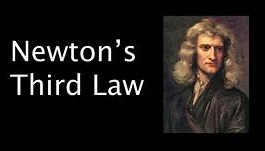Written by Ali Subhan Kiani
Dec 20 2021 3 min read
Dynamics
Force
Force is the agent the changes the state of rest or uniform motion of a body. In other words force is defined as the it is the push or pull of a object. It can stop the object; it can gives the shapes to the object. It is a vector quantity so it has a specific direction. Its measure in Newton (N).
Momentum
The moment of an
object is equal to the mass multiplied by the velocity of the object.
Momentum = mass x velocity
Symbolically, the momentum is represented by p. thus, the above equation can be written as
p = mv
SI unit of momentum
A mass unit is multiplied by velocity unit to provide a momentum unit. This is consistent with the equation for momentum, the SI unit of momentum is described below,
Momentum = mass x velocity
= kgms-1
= kgms-2 x s
= Ns ( Newton second )
Law of conservation of mass
The law of conservation of mass states that
“The total momentum
of an isolated system always remains constant”
Total momentum of the system before collision = m1u1 + m2u2. After collision the velocities become v1 and v2 respectively, therefore
Total momentum after collision = m1v1 + m2v2
According to the Newton’s first law of motion:
{Total momentum of the system before collision} = {Total momentum of the system after collision}
Newton’s law of motion
Newton’s first law
A body continues its state of rest or motion if any external force does not acts on them. Newton’s first law of motion is also known as law of inertia. You may have sometimes observed that you put your bag on the seat next to you. Whenever the bus stops suddenly, the bag slides forward off the seat. Why does it happen?
Inertia: inertia is the property of an object due to which it tends to continue te state of rest or motion. Inertia is resistance to change the state.
Newton’s second law“When a net force acts on a body it produces acceleration in the direction of force. The acceleration is directly promotional to force and inversely proportional to mass of body”
Newton’s third law
For example: while standing on ground the gravity pulls you down against the ground, the ground pushes up against you feet.
Thanks you to read the article and connecting with our site
Thank you






0 Comments
if you have any doubt. please let me know below